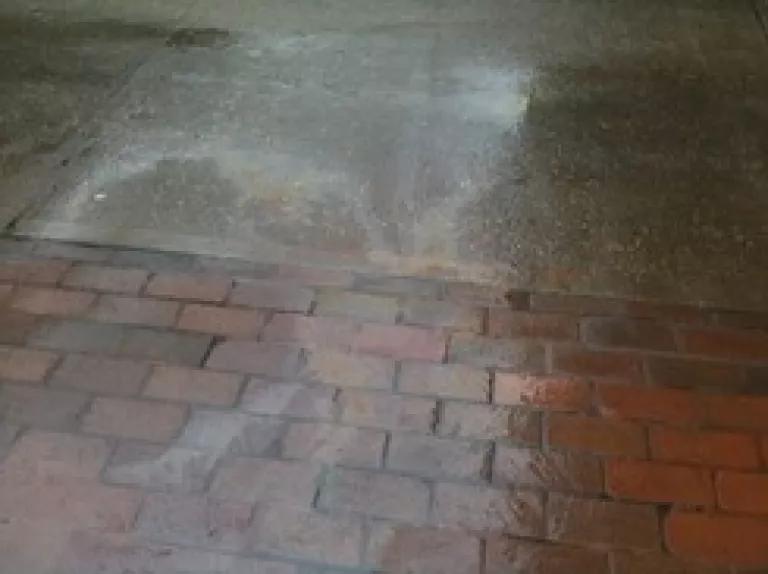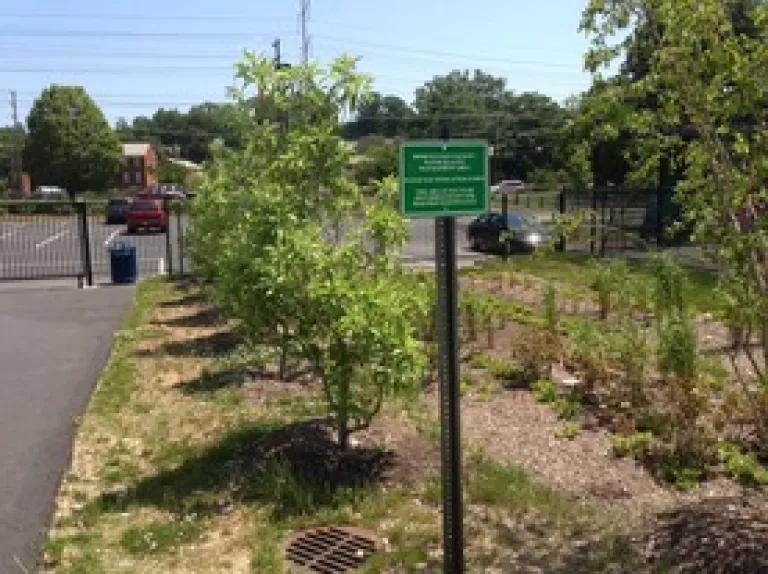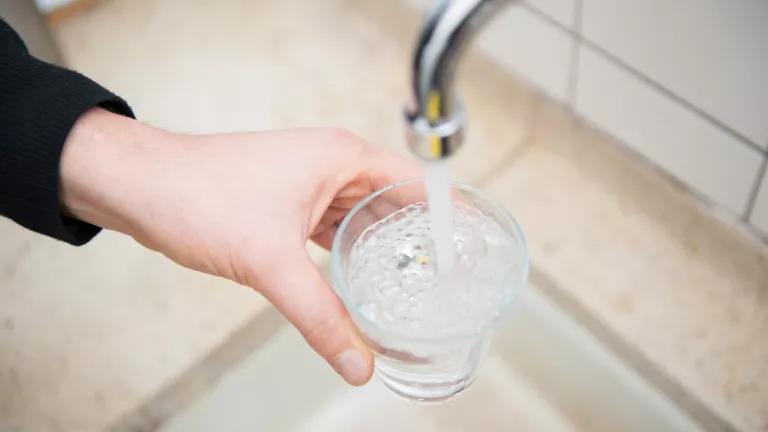It’s raining today in the DC area, which makes me think about water pollution.

When it rains here – or wherever you are – the water hitting hard surfaces like buildings, parking lots and roadways is unable to seep into the ground or be retained by natural vegetation and evaporated back to the atmosphere. Instead, it pours down gutters and out into the roads, where you can see it pick up cigarette butts, animal waste, dirt and grime, and where you’ll often see it have an oddly-beautiful rainbow sheen from oil and grease that it carries. In most places, this polluted runoff goes straight to our rivers and streams, where it can make waterways unsafe for swimming or fishing. In fact, NRDC’s annual beach water quality report – look for this year’s edition in just a few weeks! – invariably finds that the leading known cause of beach closings and swimming advisories is polluted stormwater.
Stormwater also causes a host of other problems. In over 750 cities around the country, stormwater is carried in the same pipes as sewage from people’s homes and businesses. In dry weather or small storms, the mixture is sent to a sewage treatment plant. However, these ancient systems are designed to overflow when there is too much rain for the plant to handle – dumping a sickening stinky mess into our waterways. Also, because we don’t give stormwater a way to seep into the ground or go back to the air, storms cause a huge volume of water to rush down our streams, tearing them up in the process, and flooding local communities (like it did recently over my favorite bike path in Arlington, Virginia, shown below). You can find examples all over the place, whether it's the Magothy River in Maryland, beaches in Los Angeles County, or Georgia's Chattahoochee River.
Thinking about stormwater pollution is appropriate today, not just because it’s raining, but also because today's the day the Environmental Protection Agency was supposed to – but won’t – propose important new rules to curb this source of water pollution. That rule has the potential to significantly reduce polluted runoff by requiring the folks responsible for creating stormwater to design their sites to retain the vast majority of it where it falls.

EPA’s failure today is not because the agency thinks stormwater is not a big deal -- it definitely does. And it's not because EPA thinks we lack ready solutions to the problem -- it knows that green infrastructure (like the rain garden pictured to the right near my local creek, Four Mile Run) is a cost-effective, multi-benefit set of strategies that prevent rainfall from becoming polluted runoff. I suspect that EPA has missed this deadline because it has become scared of its own shadow when it comes to water; in virtually every case that EPA has done anything good (or, frankly, mediocre) in the past several years, Congressional Republicans have tried to block it. Moreover, the White House office that coordinates review of certain regulatory actions has become a black hole for a variety of public health and environmental safeguards.
Alas, this is not EPA's first broken promise on this important rule. NRDC and our partners have been pressing EPA for many years to move forward on it, dating at least as far back as our successful litigation to compel EPA to develop rules limiting pollution from the construction and development industry. Following a court order requiring EPA to act, EPA unfortunately decided to only address the polluted runoff from active construction sites, rather than permanent pollution coming off developed lands. When NRDC and our partners objected to this half measure, EPA pledged to finish the job, saying that it would finalize requirements for stormwater from developed areas by November 2012 (EPA's top water official even wrote me a letter with this commitment [pdf]). That promise was later incorporated into a legal settlement between EPA and the Chesapeake Bay Foundation, which included a commitment to put out a draft rule for public input by September 2011.
EPA failed to meet that September 2011 proposal date, as well as a re-negotiated December 2011 date and some other short extensions. Eventually, EPA and CBF amended their agreement to give the agency a big chunk of additional time; the revised agreement required a proposed rule by June 10, 2013 and a final rule by December 10, 2014.
Now that EPA has missed today’s deadline, the test of its commitment to addressing these important problems will be how soon the agency will get the proposal out and finalize the improved rules.
In the meantime, what should people concerned with flooding, sewage overflows, and polluted beaches do about this? A few things come to mind.
- First, you can let EPA know that you're tired of waiting for improved stormwater controls, by emailing the agency at OW-Docket@epa.gov (include the identifier EPA-HQ-OW-2009-0817 in your message so that they know it’s about this rule), and telling them to get a proposed rule out post-haste.
- Second, you should think about the latest delay when you hear some members of Congress laughably complain that EPA is engaged in a “rushed” process to issue this rule. Really – they said that.
- Third, you should feel free to chuckle loudly the next time you hear the Republicans in Congress talk about EPA cutting sweetheart “sue and settle” deals with environmental groups. As my colleague John Walke recently detailed, that’s a bogus proposition in any case, but the stormwater rule is a clear example of how environmental organizations and EPA often disagree.
EPA needs to get serious about protecting water quality by issuing a proposed stormwater rule. Otherwise, every time it rains, more and more pollution will foul the waterways where we swim, fish, and boat.



